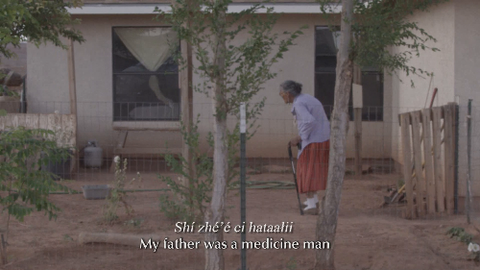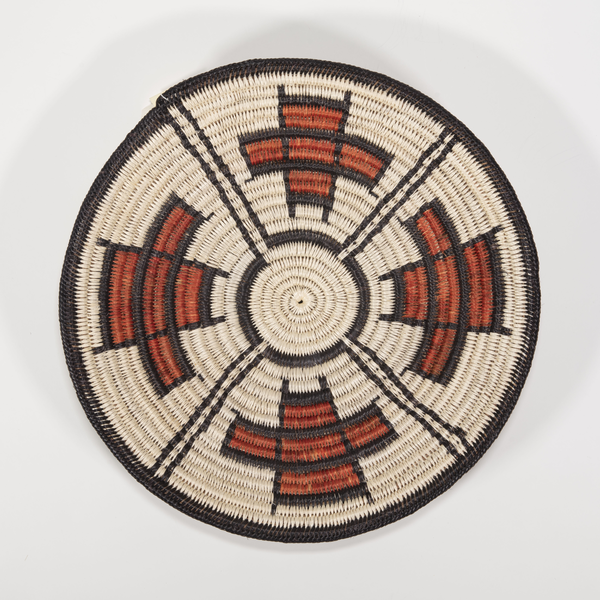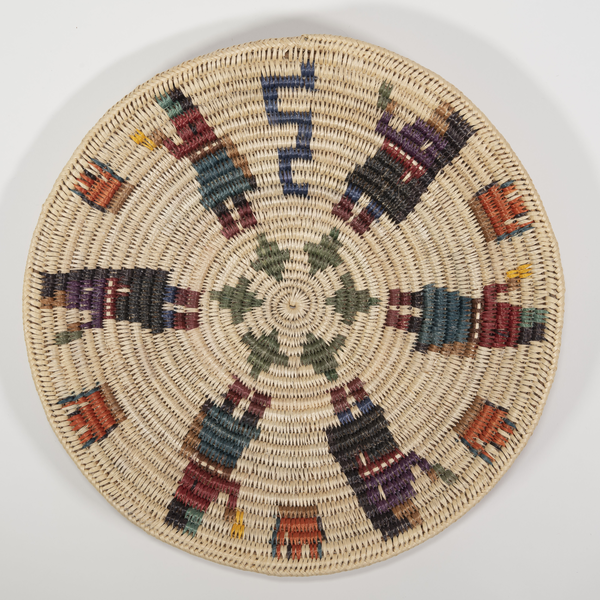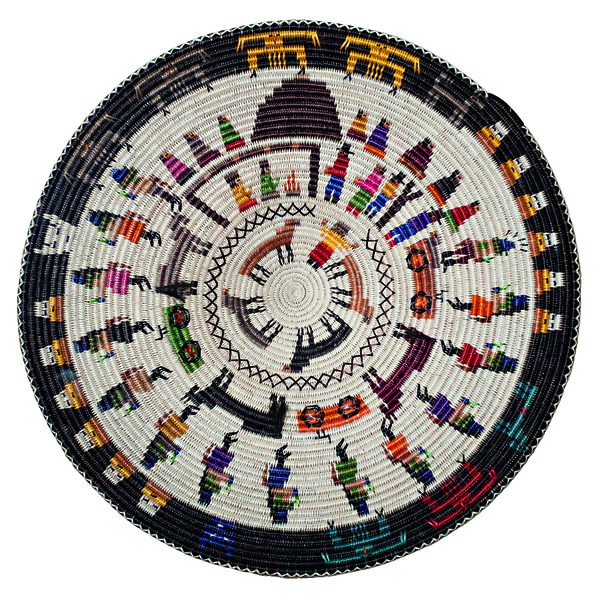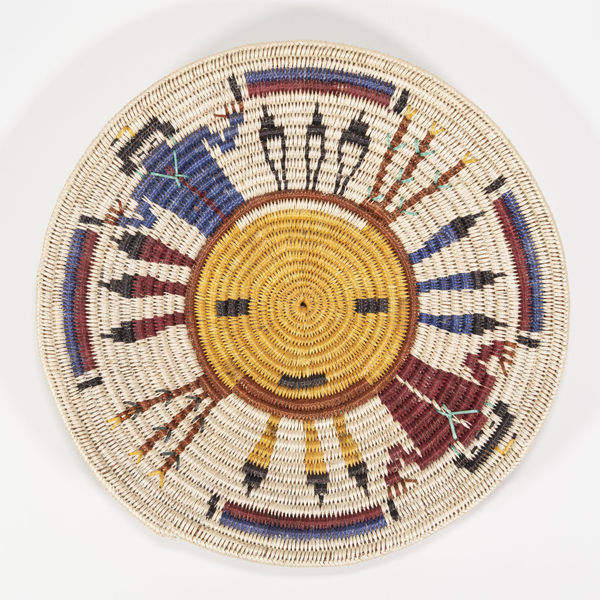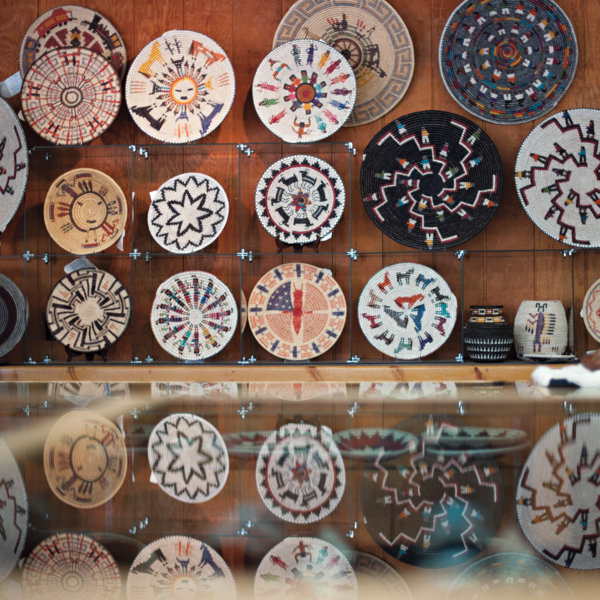Mary Holiday Black
Mary Holiday Black is a central figure in modern Diné (Navajo) basketry. The daughter of a medicine man, Mary was born in 1934 and grew up on remote Douglas Mesa in southeastern Utah. She learned to weave from her grandmother. In the 1970s and 1980s, she began experimenting with modifications to the traditional ts’aa’ (ceremonial basket). When she included images of sacred Diné stories and ceremonies in her baskets, some people told her she risked spiritual danger to herself and the community. But Mary felt her basket designs were important for preserving Diné culture and received guidance and ceremonies from her father to maintain hózhǫ́ (balance and harmony). Mary also helped preserve Diné basketry by teaching future weavers, including nine of her 11 children. In 1993, she received the Utah Governor’s Folk Art Award and in 1995 she was awarded the National Heritage Fellowship by the National Endowment for the Arts. Mary’s artistic innovations created opportunities for future basket artists and encouraged them to find self-expression and economic opportunity in weaving baskets.

